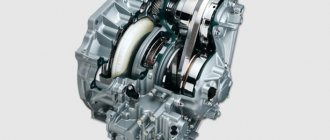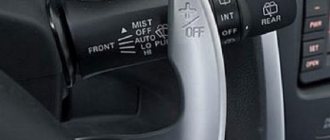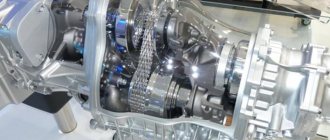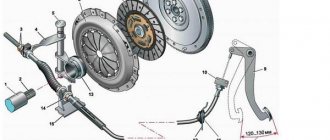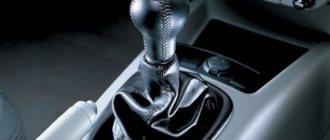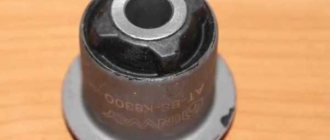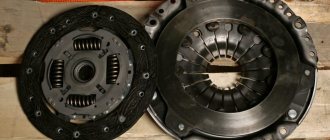Variable speed drive. This word has firmly entered the dictionary of motorists and for many it causes not only an unpleasant taste in the mouth, but also a strong desire to tap on the keyboard, expressing dissatisfaction with the very existence of CVTs in nature. Naturally, there is no smoke without fire. Continuously variable transmissions, despite their advantages, do have a whole bunch of problems. Let's look at the famous and common ones.
Today, CVTs can be found in the lineups of many major automakers. Officially, cars with continuously variable transmissions are sold in Kazakhstan by Toyota, Nissan, Renault, Mitsubishi, Subaru and Kia.
The Jatco CVTs receive the most criticism from motorists. They are equipped with Nissan, Renault and Mitsubishi cars. At the same time, you can find them both on small cars and on Nissan Murano with a 3.5-liter engine, for example.
Jatco
Regardless of the marking of the gearbox, all of them, from the old JF010E to the fairly modern JF015E, share one serious hereditary drawback - a weak pump with a pressure reducing valve. Jamming of the latter entails a lack of pressure, and this, in turn, leads to loss of contact between the cones and the belt and, accordingly, the appearance of scoring on the working surface. The cost of a new pump is 50 thousand tenge.
Jatco variator oil pump
JF010E (RE0F09A/B), JF011E (RE0F10A) . Both boxes are almost identical, but are designed for different cars. The first was installed on Nissan Altima (2007–2012), Murano (2002–2016) and Teana (2003–2016) with 3.5 liter engines.
Jatco JF010E
The second was offered on cars with engines up to 2.5 liters. In this list you can find Mitsubishi Lancer (2007-2009), ASX (2010-2017) and Outlander (2009-2014), as well as Nissan Juke (2011-2016), Qashqai (2006-2015) and X-Trail (2007-2015). 2015).
Jatco JF011E
This pair is considered to be quite reliable in comparison with its followers. The average resource ranges from 150 thousand to 200 thousand kilometers. Prices for used transmissions range from 150 thousand to 550 thousand tenge. In addition to the hereditary disease of the pressure reduction valve, which leads to the death of the belt and cones, the valve body can be called a weak point, but only under the condition that the car owner either often warmed the box or forgot about replacing the transmission fluid. The part is serviceable and must be washed, but in advanced cases the channels will not only be clogged with a suspension of dust from the clutches (which will also require replacement, the price of a complete set (forward and rev) is about 20 thousand tenge), but also worn out. Restoring a hydraulic unit, if you find craftsmen, can cost 160–250 thousand tenge, and buying a new one can cost over 400 thousand.
Also, CVTs do not like sudden acceleration from a standstill. In this case, the belt moves along a very small radius, which increases the risk of slipping. This harms both the belt itself, which costs 110–130 thousand tenge, and the cones.
Comparison of new and worn variator belt
If the JF010E or JF011E starts to get sick, then the cost of a high-quality CVT rebuild sometimes comes close to one million tenge.
JF015E (RE0F11A) is the first mass-produced Jatco variator with a planetary gear, which takes the load from the variator unit at low speeds. Its appearance eliminated the problem with sudden acceleration from a standstill and driving in traffic jams.
The model is found on many cars of the Renault-Nissan alliance with 1.6 liter engines. The list includes Nissan Juke and Qashqai, Renault Kaptur, Logan and Sandero Stepway. Recently, a similar box appeared on Lada Vesta and XRAY with Nissan HR16 under the hood.
Jatco JF015E
Unfortunately, the average resource of the JF015E is noticeably lower than that of the older JF010E, for example. Such boxes rarely travel more than 100 thousand kilometers, and the first problems may appear as early as 20 thousand. Today you can buy it secondhand for 140–480 thousand tenge.
The variator retained the hereditary problem with the pressure reduction valve sticking, and also acquired a number of its own sores. These include the input shaft bearing, which suffers from misalignment of the shaft itself under load. If the part is not replaced in time, then the body, or rather the broken seat, may also require attention.
The engineers also overlooked the structural weakness of the sun gear in the planetary gear. It breaks right along the weld seam - as a result, the car cannot move forward.
This is what the consequences of a structural weakness of the sun gear in a planetary gear look like. It broke right along the weld seam
It is also important to know that, unlike JF010E and JF011E, the valve body in the 15th box cannot be washed. If it gets clogged, you'll have to buy a new one. Its cost is from 350 thousand tenge.
JF016E, JF017E . Both of these boxes replaced the JF011E and JF010E, respectively. CVTs are similar in design, but when developing and producing new models, the company decided to use cheap components and more complex control systems. The average resource on more powerful engines is about 100,000 km.
Jatco JF017E
In general, the list of models on which this pair is used is similar: JF016E can be found under the hood of Mitsubishi Outlander, Nissan Pathfinder, Murano, X-Trail and Teana, as well as Renault Koleos with 2.5 engines. JF017E is equipped with cars with a 3.5-liter unit. The latter, by the way, has a version with a chain instead of a belt.
CVT chain
The weakest unit of the couple can be considered the hydraulic unit, which, among other things, is irreparable.
In its predecessors, changing the transmission gear ratio was controlled by a stepper electric motor. Then they decided to remove it, replacing it with solenoids, and such that it would not be possible to simply replace the failed one. Each of the valves requires individual calibration, otherwise the gearbox will not work correctly or the car will not go anywhere at all. A new hydraulic unit always comes with a disk on which the same settings are recorded. The part will cost approximately 295 thousand tenge.
Of course, it is not necessary to buy a new valve body. You can search for it in the “Spare parts” section on the Kolesa.kz portal. But... along with the part you need to purchase a control unit. Both parts must come from the same car.
Valve block from JF017E with adjustment disk
Operating principle
Variable gearboxes are divided into several types:
- chain;
- V-belt;
- toronoidal.
Toronoidal ones are not as popular as V-belt ones, mainly because they are installed on rear-wheel drive and all-wheel drive cars in which the engine is located longitudinally.
We learn about the CVT box and how long it lasts from the Vesti RF video.
Currently, the V-belt version is the most popular type of CVT gearbox. The essence of a high-quality belt is that when cut, it takes the form of a trapezoid and is wedged into the pulley with its side surfaces. To understand the device based on the operation of this belt, imagine two similar tubes that are located next to each other in a vertical position. If you twist them together with an elastic band and start twisting one tube, the second will repeat the movements of the first, and adjusting to the same speed that the first tube follows.
What is a CVT gearbox and what is its reliability, we learn from Artur Bogomolov’s video.
If one of the two parts is replaced with a larger tube, then their speed will differ noticeably: the tube with a larger diameter will rotate more slowly, which will generally disrupt the rhythm of their coordinated work. This is the principle of operation of a gearbox: the cylinders constantly change their size, and due to this, work occurs.
Gallery “Types of CVT gearboxes”
In the pictures you can see types of gearboxes.
Photo 1. Chain variator
Photo 2. Diagram of a toroidal variator
Photo 3. Chain and V-shaped belt
The gearbox contains cone-shaped pulleys, which “look” at each other with sharp ends and rest against the V-belt. The cones converge and diverge, changing the size of the pulley surface. When they move away from each other, the belt takes on a horizontal position, becoming ribs, and falls into the middle of the pulley, covering a smaller radius of its size.
If the ends meet, the belt tightens and covers a larger radius of the pulley. The operation of the pulleys is carefully controlled by a hydraulic system. She makes sure that the ends of the cones meet and separate evenly. As in the case of the example where tubes appeared, one of the cones is the leading one, and the second is the driven one. One pulley is located on the main shaft, which comes from the motor. The second pulley goes on the shaft from the car wheels.
We recommend: How to insulate a car engine for the winter
Thanks to the operation of the pulleys and their convenient location, a continuously variable transmission is obtained. The gear ratio has extensive “horizons”. When we reverse the car, the variator activates a unit that sets the output shaft to spin in the opposite direction. We will find out the pros and cons of the CVT variator in the car below.
JATCO CVT
Aisin
CVTs from the Japanese company Aisin are found on the Kazakh market in Toyota cars and hybrid versions of Lexus, including the Toyota Corolla, C-HR and RAV4 crossovers with a 2-liter engine.
Unlike Jatco CVTs, Aisin gearboxes do not have serious hereditary diseases, but they also do not like overheating and untimely maintenance. The worst effect on CVT performance is the prolonged combination of these two factors.
Burnt transmission fluid loses both its cooling and lubricating properties. This leads to wear of the parts, and the resulting metal shavings can damage the bearings on the primary and secondary shafts of the cones. The set costs about 85 thousand tenge.
On Aisin variators, problems with leakage of variator drive oil seals are occasionally encountered. There are known cases of the shaft being torn off from one of the clutch packs.
Basic CVT mechanisms (what does a CVT consist of?)
A continuously variable transmission includes a much larger number of mechanisms. Its operation is impossible without a number of components that ensure full operation of the transmission. For example, a variator cannot independently provide reverse gear for a car. The planetary gearbox is responsible for this. If there was no clutch, the torque would immediately go to the wheels. To ensure that the car starts and accelerates smoothly, the CVT design includes an automatic clutch. It could be:
- centrifugal (CVT Transmatic);
- multi-disc “wet” (CVT Multitronic);
- electromagnetic (CVT Hyper);
- torque converter (CVT Xtronic, Autotronic, Multidrive).
Torque converter clutches are found everywhere, other varieties are much less common. The torque converter clutch transmits torque as smoothly as possible, extending the life of the gearbox. Also, such a clutch eliminates slipping at high speeds, but can overheat, as indicated by a flickering indicator on the dashboard. Of course, all devices must operate under the control of a single “brain” center, which in the variator is the control unit. It receives signals from sensors that read data from a variety of systems.
The software part processes the information and changes the operating mode of the gearbox. The driver just needs to select the desired mode – “sport”, “economy”. Some modifications of the CVT box allow you to manually change gears step by step. The main technical fluid is transmission oil, which enters the required oil channels due to the operation of the valve body.
Inside the case you can find filters (coarse and fine), magnets that catch metal shavings - a product of wear and tear on the mechanical parts of the box.
- Selecting oil for the variator (by brand)
Due to the fact that the CVT overheats quickly, it requires a separate radiator. This device cools the engine oil and removes excess heat.
Subaru
Since 2009, Subaru has installed its own CVTs, collectively known as Lineartronic, on almost all cars in its lineup. For 11 years there were two types: TR690 and the modified TR580. Unlike many other CVT units, Subaru units use a chain instead of a belt.
Subaru Lineartronic
The first gearboxes are remembered for problems with oil supply pipes. They were too fragile, although they were made of metal. Now they have been replaced with plastic - this problem no longer bothers the owners.
The hydraulic unit may also break. It becomes clogged with small particles that eventually appear in the ATF. If you change the fluid infrequently, then you will have to shell out to replace the valve body, and that’s more than 420 thousand tenge just for the part.
Around 150 thousand kilometers the chain and cones will need to be replaced. The latter will cost almost 400 thousand tenge per pair. The chain itself costs about 200 thousand. Well, don’t forget about work: they can ask for about 60 thousand tenge.
A powerful spring is hidden under the cones of Subaru CVTs
A replacement CVT can also be found on the secondary market. Prices for TR690 are in the region of 300–420 thousand tenge, newer TR580 are much less common, but cost about the same.
As you can see, CVTs really have a lot of problems, including not the longest service life and safety margin, but some of them are caused not so much by the catastrophic unreliability of the design itself, but by errors in operation.
Most manufacturers require periodic replacement of the fluid in their CVTs, but automakers often forget about this and claim that the fluid is designed to last a lifetime! But in practice, the oil must be updated at least every 50,000–60,000 kilometers, and only original oil must be used. Replacement costs vary depending on the manufacturer of the box and the amount of fluid required. Together with new filters, you can expect an average of 50 thousand tenge.
When the variator starts to “kick”, alas, it is useless to change the oil. Usually jerking indicates significant wear of the elements and the need for repair. It is important not to delay your visit to the service and not to wait for expensive repairs, the cost of which, if original parts are used, can exceed a million tenge.
A few words about oil and filters
Most manufacturers assure that oil is poured into the variator gearbox forever. However, this fact is fundamentally incorrect. Our roads and weather conditions (snow, rain, severe frosts, bad roads and traffic jams) create an increased load on the device, so it is recommended to change filters and oil every 40,000 kilometers.
If this is not done, oil deposits will begin to accumulate on the structural elements, and the filter will become clogged with various debris. As a result, the pressure in the pump will drop, which will lead to shocks and jerks while driving, and in especially severe cases, the variator will simply stop working.
History of the CVT transmission
Ceramic coating of a car, pros and cons
The name variator itself comes from the Latin word, which means “changer”. Among specialists, this mechanism is usually called the abbreviation CVT, which stands for continuously variable transmission in English, or “constantly varying transmission” in Russian. Other names for this mechanism: CVT, automatic transmission CVT or V-belt CVT.
There are many designations, although not all are accurate, but the structure and operating principle of the design do not change.
In fact, the name V-belt variator refers to only one of the types, which was first used in transport. Already in 1910, a Zenith motorcycle with a Gradua-Gear transmission of this design took part in races and showed good results.
After this, the participation of cars with CVTs in competitions was prohibited due to the obvious superiority of the latter over traditional gearboxes.
The history of this type of transmission in the automotive industry begins in 1928, when the British Clyno Engineering Company first used this scheme.
Next was the Dutch automaker, which released the DAF 600 passenger car, equipped with a V-belt variator of its own Variomatic design. This particular model is the first production model with this type of transmission.
The DAF 600 used a Variomatic variator
Subsequently, the V-belt type variator became the dominant, but by no means the only, scheme used in the automotive industry. The world's leading manufacturers have developed their own designs:
- Fiat installed Transmatic on their cars;
- Mercedes-Benz – Autotronic;
- Subaru – Lineartronic;
- Honda-Multimatic;
- Audi - Multitronic.
Ford went even further and launched two CVTs: Ecotronic and Durashift CVT, followed by Japanese Nissan with Xtronic and Hyper.
The list goes on and on. The great potential of such a transmission is also evidenced by the ban on its use in Formula 1 races, which lasted until 1994.
CVT, robot or automatic: what to choose?
At the end of the article, we will answer a question asked in many forums. In fact, it all depends on your preferences.
The robot is the best choice for those who want the advantages of mechanics and the controllability of an automatic transmission.
The automatic is an excellent and time-tested option. Such cars do not have problems with repairs, and their cost is lower, however, when changing gears on some models, jolts or slipping may still be observed.
A CVT is the best choice if you want good handling, optimal fuel consumption and maximum optimization. However, such cars are still not widespread enough in Russia and, therefore, there are difficulties in repairing them (high price of consumables and difficulties in finding a repairman).
As you can see, there is no objectively the best option, however, the CVT has great prospects for development and therefore you can pay attention to a car with just such a gearbox.

